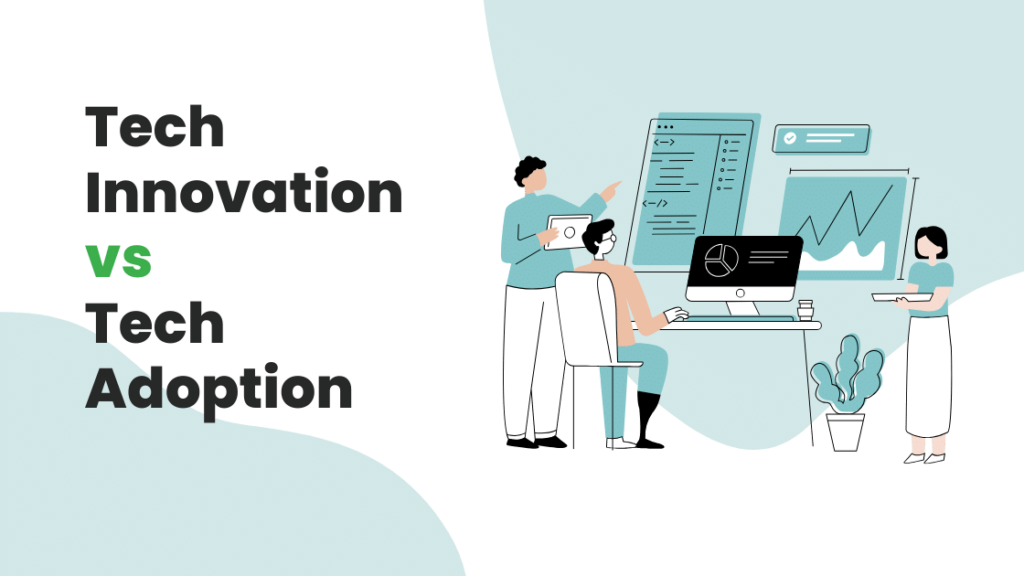
In the realm of technology, a delicate balance exists between innovation and adoption. With two decades of experience in the tech industry, I have witnessed firsthand the seismic shifts that occur when businesses grapple with integrating new technologies into their operations. This article aims to shed light on the real challenges businesses face in this arena and provide insights into how they can navigate these waters successfully.
The Paradox of Progress
Tech innovation is the lifeblood of progress. It’s the driving force that propels industries forward, introducing new possibilities and reshaping the landscape of business. However, with each groundbreaking invention comes the challenge of adoption. How do businesses integrate these innovations into their existing frameworks? How do they ensure that their teams are equipped to handle new technologies? These questions are at the heart of the struggle between innovation and adoption.
The Adoption Hurdle
The journey from innovation to adoption is fraught with obstacles. One of the primary challenges is the resistance to change. Humans are creatures of habit, and altering established workflows can be met with skepticism and apprehension. Additionally, the cost of implementing new technologies can be prohibitive for many businesses, especially small and medium-sized enterprises (SMEs).
Another significant hurdle is the skills gap. As technologies evolve, so do the skills required to manage them. Businesses often find themselves in a race to upskill their workforce or recruit new talent with the requisite expertise. This challenge is compounded by the rapid pace of technological advancement, which can render skills obsolete almost as quickly as they are acquired.
Industry-Specific Challenges in Tech Adoption
Here are some examples of industries facing challenges in the context of tech innovation and adoption:
-
- Healthcare: The healthcare industry is experiencing a digital transformation, but the adoption of electronic health records (EHRs), telemedicine, and AI-driven diagnostic tools is met with concerns about data privacy, security, and the need for significant training for medical staff.
- Manufacturing: The shift towards Industry 4.0, involving automation, IoT, and smart factories, presents challenges in terms of high initial investment costs, the need for skilled labor to operate advanced machinery, and concerns about job displacement due to automation.
- Retail: The rise of e-commerce and the integration of technologies like augmented reality (AR) for virtual try-ons and AI for personalized recommendations require retailers to adapt quickly. However, they face hurdles in logistics management, maintaining an omnichannel presence, and safeguarding customer data.
- Finance: The financial sector’s move towards fintech and digital banking requires robust cybersecurity measures to protect against fraud and hacking. Additionally, there is a need to comply with evolving regulations and to gain customer trust in using digital financial services.
- Education: The shift to online learning and educational technologies (EdTech) poses challenges in ensuring equitable access to digital resources, maintaining student engagement, and adapting curricula to incorporate digital tools effectively.
- Agriculture: The adoption of precision agriculture, using sensors, drones, and big data analytics, faces obstacles in terms of high costs, the need for technical expertise, and resistance from traditional farmers accustomed to conventional farming methods.
- Transportation: The transportation industry’s move towards autonomous vehicles, electric vehicles (EVs), and smart infrastructure requires significant investment in R&D, regulatory approval, and public acceptance of new technologies.
Each industry faces unique challenges in adopting new technologies, but with strategic planning, collaboration, and a focus on addressing specific pain points, they can successfully navigate the path from innovation to adoption.
Bridging the Gap
So, how do businesses bridge the gap between tech innovation and adoption? The answer lies in a strategic approach that prioritizes adaptability, continuous learning, and collaboration.
-
- Foster a Culture of Innovation: Encourage a mindset that embraces change and values experimentation. This can be achieved through leadership that champions innovation and an organizational structure that supports agile decision-making.
- Invest in Training: Equip your team with the skills they need to handle new technologies. This might involve partnering with educational institutions, offering in-house training programs, or providing access to online learning platforms.
- Collaborate with Experts: In many cases, the most efficient way to navigate tech adoption is by partnering with experts in the field. This can provide access to specialized knowledge and reduce the burden of implementation.
- Focus on Value: When considering new technologies, always assess their potential impact on your business. Will they streamline operations, enhance customer experiences, or open up new revenue streams? Prioritize innovations that align with your strategic goals.
My Journey in Tech Adoption
As a seasoned professional with two decades in the tech industry, I have dedicated my career to helping businesses navigate the complexities of tech adoption. We specialize in developing software, managing cloud services, and assisting businesses in making the right decisions when it comes to tech innovation and adoption. Our mission is to empower businesses to harness the power of technology to solve their day-to-day problems and achieve their strategic objectives.
In conclusion, the journey from tech innovation to adoption is a challenging one, but it is also filled with opportunities for growth and transformation. By embracing change, investing in your team, and seeking expert guidance, your business can successfully navigate this journey and reap the rewards of technological advancement.
I hope this article provides valuable insights for businesses looking to embrace tech adoption. If you’re interested in learning more about how we can help your business thrive in the digital age.
Book Your Free Consultation Here: https://calendly.com/thinkonic/30min
#TechInnovation #TechAdoption #BusinessGrowth #DigitalTransformation #SoftwareDevelopment #CloudServices
